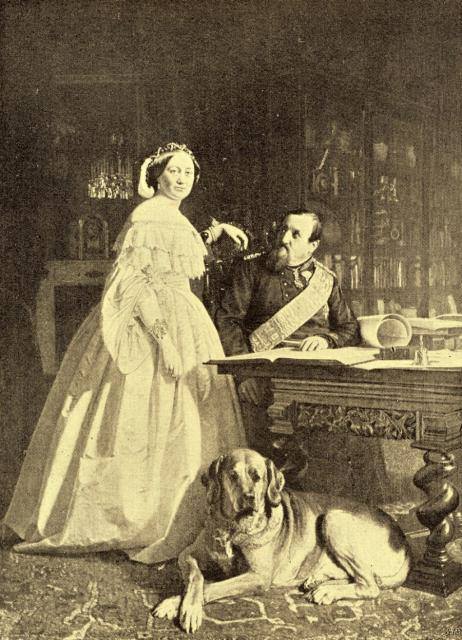
What a difference time makes, give or take a couple of centuries.
At one time, Broholmers were regarded as a very ordinary breed, and described as much in a 19th century Danish dog book. Known since medieval times when they were used to hunt boars, Broholmers were often seen lying around (and blocking) the doorways of butcher shops, especially around Copenhagen. Royalty owned Broholmers to hunt boar, and used them to guard their castles and large estates.
Today, most people have never heard of the breed.
The Broholmer had its roots in puppies that resulted from unions between Mastiffs sent to the Danish court, and local dogs. King Frederick VII owned several Brohlmers (one favored dog in particular – “Tyrk” – was immortalized at his death by being stuffed and donated to the Copenhagen Zoological Museum).
Over time, however, people didn’t need a large hunting dog. The way people hunted changed, and it was expensive to keep a dog that big. Interest in the breed declined, and by the mid 1800’s, the breed was almost extinct.
Enter Count Niels Frederik Sehested of Broholm-Funen. In the middle of the 19th century, he became interested in the breed after seeing old prints depicting it. He not only gave the breed its modern name, but helped restore it. He began to collect dogs for a breeding program that he promoted by presenting puppies only to those Danes willing to adhere to his breeding program. After decades of strict guidelines, the breed’s features standardized and began to flourish again.
It wasn’t to last. Two world wars took its toll on the breed. Between epidemics, canine distemper, and the difficulties of affording to feed such large dog, the Broholmer was at risk of extinction once again. In fact, the last specimen of the breed was believed to have died in 1956.
In 1974, named Jytte Weiss (a VIP in the world of preserving Danish heritage) restored interest in the breed as the result of an article she wrote entitled, ‘In Search of the Broholmer.’ It’s said that telephone call alerted her to an eleven year old dog that met the demands of the 1886 breed standard. The Danish Kennel Club joined in with a nationwide search for any other Broholmers, and almost unbelievably, the Committee for National and Forgotten Breeds found two more quality Broholmers. Encouraged by the find, veterinarians, dog lovers and fanciers scoured the country for more, and found them in villages where they were owned by farmers, ranchers, lumberjacks and peasants.
What were the odds?
The current number of Broholmers won’t tilt the world off its axis, but the breed is gaining strength. In 1998, the Broholmer – sometimes known as the Danish Mastiff – was officially recognized by the FCI, and in 2006, it was accepted by the United Kennel Club. It is currently an AKC FSS breed and will take its place in the working group when it meets all the requirements for full recognition.
Anyone lucky enough to meet a Broholmer in person will see a dog that is not as massive as a Mastiff, and a bit more elegant in build, but a large dog nonetheless. The Broholmer has a massive head, wide chest, and impressive physique, but this is a calm breed that is so good-natured that they are described as having a heart of gold.
Image of King Frederik VII of Denmark and Countess Danner with a Broholmer
